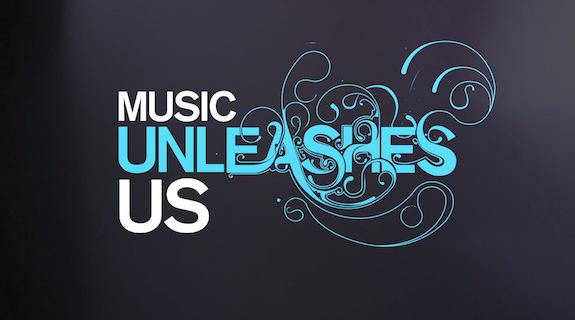Last year’s Grammy Award show on CBS was the second-most tweeted broadcast event of 2013, runner-up to only the Super Bowl. It also pulled in nearly 30 million viewers, its second-largest audience since 1993. For this year’s broadcast, set for this Sunday, January 26, CBS and Grammy Awards overseer the National Academy of Recording Arts and Sciences hopes to build on that momentum, with a sweeping campaign that “unleashes” the power of music across nearly every major social platform imaginable.
“We start from the premise that everything we do from a marketing standpoint needs to be social, needs to be shareable,” Recording Academy CMO Evan Greene recently told the New York Times. Dubbed “Music Unleashes Us” (hashtag: #MusicUnleashes), the 2014 Grammy Awards campaign has fulfilled that premise and then some, with major executions across Facebook, Instagram, Pinterest, Tumblr, Twitter, Vine and YouTube. Where past campaigns have focused on the fans or the musicians appearing in the broadcast, this year’s campaign focuses on the music itself, and its ability to incite “natural, sometimes uncontrollable, visceral reactions” in fans, according to a statement released on Grammy.com – “laughing, crying, screaming or dancing.”
It all kicked off with a different live broadcast on December 6, “The Grammy Nominations Concert Live! – Countdown to Music’s Biggest Night,” a promotional event in itself featuring performances from Macklemore, Taylor Swift, and many more. As per Greene’s dictum, the broadcast seemed particularly calculated to produce sharable video, with buzz-worthy moments such as one that found Keith Urban and Miguel jamming on Bill Withers’ “Ain’t No Sunshine.”
From there, “Music Unleashes Us” has moved forward at top speed, with viral videos spreading like wildfire that feature fans reacting viscerally to soundtracks by the likes of Katy Perry, Pink & Nate Ruess, and once again Macklemore, who could be considered a kind of mascot for this year’s telecast. Playing on the “public surprise” element that seems to virtually guarantee viral success, Macklemore’s video shows the rapper and compadre Ryan Lewis playing to a public bus full of onlookers in the Bronx. At the time of this writing, the clip is approaching 3 million viewers on YouTube.
Leveraging the viral hit still further, the campaign will release a “backmasked” version of the Macklemore video in the days leading up to this weekend’s broadcast. Utilizing rich media, the new version will reveal a hidden message when played backwards, paying homage to a movement in the ‘70s that found popular artists doing the same thing with their albums.
In addition to uploading these videos on YouTube, Vine and Instagram, the campaign created several of that endlessly sharable format, the GIF, and made them available on GRAMMYs.com. They have since been distributed by popular musicians and fans alike across Tumblr, Twitter, Facebook and other stops along the social highway.
It’s all leading up to a CBS broadcast that will set new standards for multiplatform access to a live event. This Sunday, starting at 12:00 p.m. ET, “GRAMMY Live” will begin streaming a massive array of exclusive video content across GRAMMY.com, CBS.com and on the GRAMMY Live iOS and Android mobile apps. Said content includes, but is not limited to: behind-the-scenes cameras, photos, official news reports, blogs, and personalized updates from mobile awards hosts Andrew Burnette, Louise Rowe, Quddus, and DJ Skee, as well as special post-show wrap-up content with Mashable associate entertainment editor Brian Anthony Hernandez.
And of course the fun will continue into the live telecast with a multi-screen experience offering backstage interviews, red-carpet coverage, pressroom question-and-answer sessions, historical Grammy moments, and a live-feed of Grammy winners portrait sessions. Throughout the day, users will also be able to choose from multiple cameras including positions in the photo-portrait room, load-in, backstage, and a red-carpet overview.
Naturally, all these digital efforts will be supported by built-in social integration, ensuring users can quickly and easily transmit their enthusiasm for the broadcast out to the world. With social media usage only rising, along with marketers’ ability to leverage it, it’s hard to imagine the 2014 Grammy Awards won’t equal or exceed the quantities enjoyed by last year’s telecast, which hit 24.9 million mentions. With those efforts geared toward supplementing the live experience, it’s safe to say high ratings will follow. “Music Unleashes Us” may be honoring its art form’s potential for wild release, but the campaign’s ability to leverage social media is more controlled than ever.
“This campaign celebrates the undeniable human truth that we are powerless against music,” said TBWA\Chiat\Day creative director Rick Utzinger in a statement. His fellow creative director Bob Rayburn chimed in: “It will tap our toes and shake our hips for us, whether we want to or not.”
Tags:













































__twocolumncontent.jpg)











